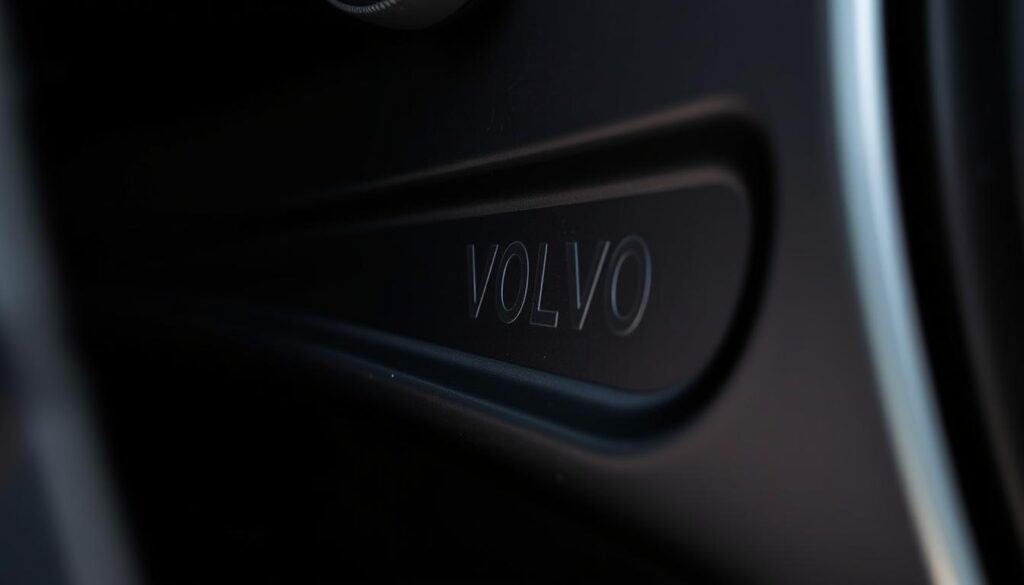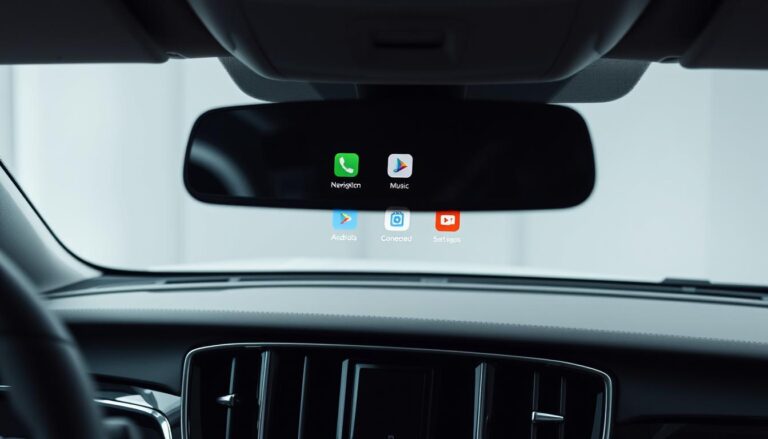Understanding the intricacies of your Volvo’s Vehicle Identification Number (VIN) is crucial for maintenance, repairs, and upgrades. The VIN contains vital information about your vehicle, including the chassis code, which is essential for identifying the correct parts and specifications.
Decoding your Volvo VIN can seem daunting, but it’s a valuable skill that can save time and money. By understanding the chassis code and other components of the VIN, you can ensure that you’re getting the right parts and services for your vehicle.
Knowing your Volvo’s chassis code is vital for owners who want to maintain their vehicle’s performance and longevity. In this guide, we’ll walk you through the process of decoding your Volvo VIN and understanding the significance of the chassis code.
Key Takeaways
- Understanding your Volvo’s VIN is essential for maintenance, repairs, and upgrades.
- The chassis code is a critical component of the VIN that identifies the vehicle’s specifications.
- Decoding your Volvo VIN can save time and money.
- Knowing your chassis code ensures you’re getting the right parts and services.
- This guide will walk you through the process of decoding your Volvo VIN.
Understanding Volvo VINs and Chassis Codes
Volvo’s Vehicle Identification Numbers (VINs) are more than just a random sequence of characters; they hold the key to understanding your vehicle’s specifications, including its chassis code. The VIN is a 17-character code that contains vital information about your Volvo, such as its model year, engine type, and manufacturing plant.
What is a Vehicle Identification Number (VIN)?
A Vehicle Identification Number (VIN) is a unique identifier assigned to every vehicle. For Volvo owners, understanding the VIN is crucial because it contains essential information about the vehicle’s history, specifications, and features. The VIN is typically found on the driver’s side dashboard near the windshield or on the driver’s side doorjamb.
The structure of a VIN is standardized, with each character representing specific information about the vehicle. This includes details such as the country of origin, manufacturer, vehicle type, engine type, model year, and manufacturing plant. By decoding the VIN, Volvo owners can gain insights into their vehicle’s original specifications and history.
How Volvo Chassis Codes Relate to VINs
The chassis code is an integral part of the VIN, providing specific information about the vehicle’s platform and configuration. Volvo uses various chassis codes to denote different models and generations of vehicles, such as the P1, P2, P3, and SPA platforms. Understanding the chassis code is vital for identifying the correct parts and accessories for your Volvo.
To illustrate how Volvo chassis codes relate to VINs, consider the following table:
| Chassis Code | Volvo Model | Platform |
|---|---|---|
| P1 | XC60, S60, V60 | Compact Modular Architecture |
| P2 | S80, XC90, V70 | Global Platform |
| SPA | XC90, S90, V90 | Scalable Product Architecture |

Where to Find Your Volvo’s VIN and Chassis Code
Locating your Volvo’s VIN and chassis code is a straightforward process that involves checking specific areas of your vehicle and its associated documents. These identifiers are crucial for various purposes, including maintenance, repairs, and purchasing parts.
Physical Locations on Your Vehicle
The VIN is typically found on the driver’s side dashboard near the windshield and on the driver’s side doorjamb. You can also find it on the engine compartment or on the vehicle’s certification label. For the chassis code, it is often embedded within the VIN.

Documentation Locations
Your Volvo’s VIN and chassis code are also listed in various documents. Check your vehicle’s title, registration, and insurance documents. Additionally, the owner’s manual and service records often contain this information.
| Document | Typical Information |
|---|---|
| Vehicle Title | VIN, Vehicle Details |
| Registration | VIN, Owner Information |
| Owner’s Manual | VIN, Chassis Code, Maintenance Schedule |
What Chassis is My Volvo? Decode VINs and Chassis Codes
Deciphering your Volvo’s chassis code requires a closer look at its VIN. The Vehicle Identification Number (VIN) is a 17-character code that contains vital information about your vehicle, including its chassis type. Understanding how to decode this information is essential for identifying the correct chassis code.
The Structure of a Volvo VIN
A Volvo VIN is structured in a specific way to convey detailed information about the vehicle. The first three characters represent the World Manufacturer Identifier (WMI), indicating that the vehicle is manufactured by Volvo. The next six characters are the Vehicle Descriptor Section (VDS), which includes details about the vehicle’s model, engine type, and other specifications. The eighth character is particularly important as it identifies the engine type, and the tenth character indicates the model year.
The VIN structure can be broken down as follows:
| Characters | Description |
|---|---|
| 1-3 | World Manufacturer Identifier (WMI) |
| 4-8 | Vehicle Descriptor Section (VDS) |
| 9 | Check Digit |
| 10 | Model Year |
Identifying Your Chassis Code from the VIN
To identify your Volvo’s chassis code, you need to look at the Vehicle Identification Section (VIS) of the VIN, which includes characters 12 through 17. However, the chassis code is not directly stated in the VIN; instead, it’s encoded within the VDS section. Specifically, the fourth and fifth characters of the VIN are crucial for determining the chassis type.
For example, if your Volvo’s VIN starts with “YV1PW…”, the “PW” indicates that it’s an XC60 model, which corresponds to a specific chassis code. Refer to the manufacturer’s documentation or a reliable Volvo database to decode the exact chassis code based on your VIN’s VDS section.
Common Volvo Chassis Codes and Their Meanings
Volvo chassis codes are more than just a series of numbers and letters; they hold the key to understanding your vehicle’s identity. These codes are essential for determining the specifications, capabilities, and compatibility of various Volvo models. In this section, we’ll explore the common chassis codes associated with different Volvo platforms.
P1 Platform Models (XC60, S60, V60)
The P1 platform was used for compact luxury vehicles, including the first generation XC60, S60, and V60. The chassis code for these models typically starts with “YV1” or “YV3” followed by a specific sequence that identifies the platform and model year.
P2 Platform Models (S80, XC90, V70)
The P2 platform was utilized for larger Volvo models such as the S80, XC90, and V70. Vehicles on this platform have chassis codes that often begin with “YV1” or “YV3” and are followed by a unique identifier for the P2 platform.
P3 Platform Models (S60, V60, XC60)
The P3 platform was introduced for the second generation S60, V60, and XC60. Chassis codes for P3 models are typically denoted by a specific sequence that differentiates them from earlier P1 and P2 models.
SPA Platform Models (XC90, S90, V90)
The SPA (Scalable Product Architecture) platform is used for more recent Volvo models, including the second generation XC90, S90, and V90. The chassis codes for SPA platform models are designed to reflect their advanced technology and modular design.
| Platform | Models | Chassis Code Prefix |
|---|---|---|
| P1 | XC60, S60, V60 | YV1, YV3 |
| P2 | S80, XC90, V70 | YV1, YV3 |
| P3 | S60, V60, XC60 | Specific sequence |
| SPA | XC90, S90, V90 | Advanced modular code |
Understanding these chassis codes is vital for ordering correct parts and ensuring compatibility between models. By decoding your Volvo’s chassis code, you can gain valuable insights into its specifications and capabilities.
Decoding Other Important Information from Your Volvo VIN
The VIN of your Volvo is more than just a unique identifier; it’s a key to understanding your vehicle’s configuration. Beyond the chassis code, the VIN contains a wealth of information that can be decoded to reveal details about your vehicle’s specifications, history, and features.
Model Year and Manufacturing Plant
The 10th character of your Volvo’s VIN represents the model year, and the 11th character indicates the manufacturing plant. Understanding this information is crucial for ordering the correct parts and verifying the authenticity of your vehicle. For instance, knowing the model year helps in identifying the correct software updates or parts compatible with your vehicle.
Engine Type and Transmission
The VIN also encodes information about the engine type and transmission. By decoding the 4th to 8th characters of the VIN, you can determine the engine specifications and transmission type. This information is vital for maintenance purposes, ensuring that you use the correct fluids, filters, and parts.
Safety and Equipment Features
Furthermore, the VIN contains data about the safety features and equipment installed in your Volvo. Decoding this information can help you understand the advanced safety features your vehicle is equipped with, such as airbags, ABS, and traction control systems. This knowledge is essential for troubleshooting and ensuring that your vehicle’s safety features are functioning correctly.
Practical Applications of Knowing Your Volvo’s Chassis Code
The chassis code of your Volvo is more than just a series of numbers and letters; it’s a key to unlocking several benefits. By understanding this code, Volvo owners can gain valuable insights into their vehicle’s specifications and capabilities.
Ordering Correct Parts and Accessories
One of the primary practical applications of knowing your Volvo’s chassis code is ensuring that you order the correct parts and accessories. This code helps in identifying the exact specifications of your vehicle, thereby reducing the risk of purchasing incompatible parts.
Understanding Compatibility Between Models
Knowing your chassis code also aids in understanding the compatibility between different Volvo models. This is particularly useful when considering upgrades or replacements, as it helps in determining which parts can be interchanged between models.
Troubleshooting and Maintenance Considerations
Furthermore, being aware of your Volvo’s chassis code can significantly aid in troubleshooting and maintenance. It provides technicians with crucial information about your vehicle’s configuration, enabling them to diagnose issues more accurately and perform necessary repairs efficiently.
In conclusion, understanding your Volvo’s chassis code has numerous practical applications that can enhance your ownership experience. From ordering the correct parts to aiding in troubleshooting, this knowledge is invaluable for any Volvo owner.
Conclusion
Understanding your Volvo’s chassis code and Vehicle Identification Number (VIN) is crucial for maintaining, repairing, or upgrading your vehicle. As explained in this guide, decoding your Volvo’s VIN and chassis code can provide valuable insights into its specifications, manufacturing details, and compatibility with parts and accessories.
By grasping the importance of VIN and Volvo chassis codes explained, you can make informed decisions when ordering parts, troubleshooting issues, or planning upgrades. This knowledge can also help you understand the compatibility between different models and years, ensuring that you choose the right components for your vehicle.
Now that you’ve decoded your Volvo’s VIN and chassis code, you can apply this knowledge to enhance your ownership experience. Whether you’re a seasoned mechanic or a DIY enthusiast, understanding your vehicle’s specifications can help you keep it running smoothly and maintain its performance over time.
FAQ
What is the difference between a Volvo VIN and a chassis code?
The Vehicle Identification Number (VIN) is a unique 17-digit code assigned to every vehicle, while the chassis code is a specific part of the VIN that identifies the vehicle’s platform or chassis type.
How do I decode my Volvo’s VIN to find the chassis code?
To decode your Volvo’s VIN, you need to understand the structure of the VIN. The chassis code is typically found in the 4th or 5th position of the VIN. Refer to our guide on decoding Volvo VINs for a step-by-step explanation.
What are the common Volvo chassis codes for different models?
Common Volvo chassis codes include those for P1, P2, P3, and SPA platforms. For example, the P1 platform includes models like the XC60, S60, and V60, while the SPA platform includes models like the XC90, S90, and V90.
Why is it important to know my Volvo’s chassis code?
Knowing your Volvo’s chassis code is crucial for ordering the correct parts and accessories, understanding compatibility between models, and aiding in troubleshooting and maintenance.
Where can I find my Volvo’s VIN and chassis code?
You can find your Volvo’s VIN and chassis code on the vehicle’s certification label, on the driver’s side dashboard, or on the driver’s side doorjamb. You can also find it in your vehicle’s documentation, such as the owner’s manual or registration.
Can I use the chassis code to determine my Volvo’s engine type or transmission?
While the chassis code identifies the vehicle’s platform, it does not directly indicate the engine type or transmission. However, by decoding the VIN, you can determine this information, as the VIN contains details about the engine type and transmission.
How does knowing my Volvo’s chassis code help with maintenance and repairs?
Knowing your Volvo’s chassis code helps ensure that you order the correct parts and accessories, reducing the risk of incorrect or incompatible components. This information also aids in troubleshooting and maintenance, as certain issues may be specific to certain chassis codes.



